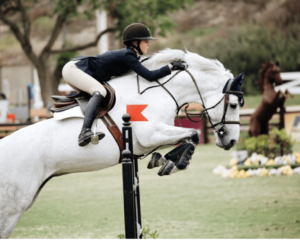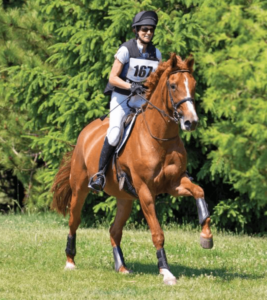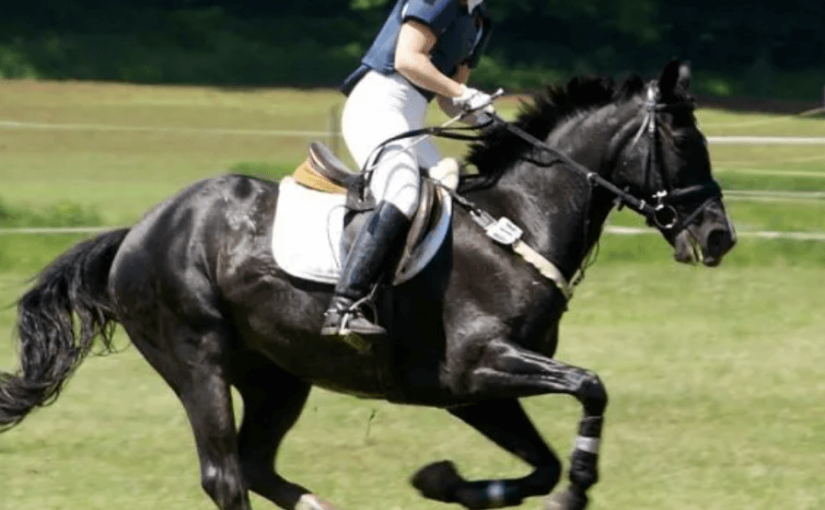Horse riding, also known as equestrianism, encompasses all aspects of riding a horse for various purposes. The activity has been around since virtually the beginning of time. And most historical sources claim that horses were first ridden for transportation purposes.
Today, riding a horse is no longer primarily for transportation, as there are more efficient means. However, the activity remains very popular for other purposes such as recreation, herding farm animals, police work, cultural and artistic exercises, and sports. A significant portion of horse riding activities today is sports-oriented.
Horse sports are arguably one of the oldest and are often paired with other physical activities such as hurdle jumping, roping, hitting a ball, etc. These sports are still actively practiced today and have even evolved to accommodate more versions.
Horse sports are more than just an entertaining hobby for those who like to ride their horses. Anybody can ride a horse if they are willing to learn the skill. Although horse sports are fun, they are very demanding. Apart from a wide range of skills, these sports require a high level of physical strength and mental coordination.
Competitive horse sports are different from most other sports as they don’t only involve the riders involved, known as jockeys. The outcome of a horse sport isn’t only dependent on how skillful the jockey is but also on the horse’s health, strength, body, and skill. This is why the horses used for competitive sports are specially trained and well taken care of to ensure they are in the best condition to compete.
As a true equestrian, taking care of your horse, maintaining its diet, and understanding its anatomy and grooming are must-have skills. This is because the horse’s health, strength, and skill are just as important as the rider’s quality.
That said, let’s delve into the history of horse sports.
Origin of Horse Sports
It is difficult, if not impossible, to pinpoint the first people in history who rode horses. However, some historical sources suggest that this action first took place around 3500 BC. During these periods and several centuries after, horses were mainly associated with the royals, the rich, and the military. They were primarily used for transportation.
Moreover, horses became increasingly common as a mode of transportation at some point. During these times, specially constructed and decorated chariots distinguished nobles and royals from common people. The military also used war-built chariots.
The discovery of chariot burials dating back to around 2500 BC represents the most direct empirical proof of horses’ use. Despite the uncertainty that clouds the exact origin of horse riding, it is undeniable that the activity is a fundamental part of human history, cutting across transportation, warfare, trade, and agriculture.
Sports have been an essential component of horse riding for a long time. Throughout history, humans have been enthralled by the use of horses for various sporting activities. This concept was likely fueled by the thrills of determining which horse is the fastest, strongest, and most trained.
According to history, horse sports were first linked with the royals, the wealthy, and the nobles, who typically organized such activities directly or as spectators. Hence it was given the name “sport of kings.” Over the years, these sports, particularly racing, have evolved into a more widespread and universal hobby. Gambling on these sports events also became their prominent feature. Gambling on horse sports goes way back to the origin of the sports themselves. In fact, horse racing is one of the first sports that people wagered on, according to many historical sources.
Before the official inclusion of horse sports into the Olympics in 1912, the creation of the Royal Dublin Horse Show in 1868 was one of the first events that brought the sporting angle of horse riding to the limelight, particularly in Europe and North America. Since then, horse sports have grown popular globally in different formats and competitions, including the Olympics.
Types of Horse Sports
A significant portion of modern horse sports is said to have evolved from various military-related horse riding maneuvers and routines. In other words, they emerged from military practices aimed at improving the safety and efficiency of mounted troops. For example, Jumping, dressage, and eventing, three popular horse sports, were thought to be first introduced as military exams. Other military-related traditions used in horse sports today include mounting from the left, carrying the bight of the reins on the right, laying the manes on the right, carrying a sheath on the left, etc.

Today, there are more than 15 recognized disciplines in horse sports. Each sport requires a unique skill set from the rider and the horse. Although not all the 15 sports are Olympic events, many are nationally and internationally recognized. In fact, if the diversity of horse sports practiced in various parts of the world is accounted for, there are approximately 100 known horse sports disciplines.
Let’s delve into five of the most popular horse sports.
Horse racing
Horse racing is the most basic form of sport and one of the most ancient horse sport variants. The sport involves riding horses over a defined distance to identify the fastest rider and horse. In most cases, the jockey and the horse are a team. However, the races are held between horses without riders in some formats. There are over five different variations of horse racing, which are as follows:
- Flat Racing
Flat racing is similar to sprinting. It is determined mainly by speed, stamina, and, most significantly, the rider’s (jockey’s) skills. Flat races are also divided into other categories, most of which are determined by the type of horse used.
Horses can be classified based on breed, gender, age, or ability. The most popular races seen in flat racing are thoroughbred races. Other flat race categories include classic, grouped, listed, handicap, or maiden races. Flat horse races are typically held on grass, although lately, some have taken place on synthetic grass and weather courses.
- Jump Racing
The distinction between jump races and flat races is that they contain a series of obstacles that the jockey must jump with their horse. The obstacle can either be a fence or a hurdle. The sport is also known as steeplechasing or national hunt racing, as it is popularly recalled in the UK and Ireland.
- Harness racing
A harness race usually involves a horse connected to a two-wheeled cart. The rider, in this case, sits in the carts, from where he controls the horse.
- Endurance racing
Endurance racing, as the name suggests, is a long-distance horse race. The jockey rides the horse for a lengthy distance, typically 25 to 100 miles daily. This race requires a strong horse with a suitable fitness level because it must traverse natural terrains that may not be flat and leveled.
Dressage
Dressage is one of the horse sport formats played in the Olympics. This sport features a series of demonstrations and movements rated out of ten. The ratings these judges give depend on how calmly, gracefully, and effortlessly each horse completes appropriate maneuvers. This is why horses that are used for dressage must be specially trained.
In most cases, more than ten years of training is required to develop a horse’s strength, skill, and balance for dressage. Sometimes, a dressage horse could take more than ten years of training to achieve an Olympic-level performance. Apart from the horses, a dressage rider must also undergo training to perfect the skill.
Top riders make dressage moves appear easy; it’s almost as if they don’t move in the saddle, even when executing complex movements like flying changes. However, dressage is considered the most difficult horse sport because of the high skill level it demands.
Show Jumping
Show jumping, also included in the Olympics, is similar to jump racing. However, the purpose of show jumping is to jump over a series of hurdles without focusing on the distance covered. That is, unlike jump racing, show jumping is not a race. Thus riders are only scored based on how effectively they clear the obstacles within the allotted time. The fewer obstacles knocked down, the higher the score.
Eventing
This three-day tournament often includes a variety of horse sports disciplines. Riders participate in dressage, cross-country, and stadium jumping over the three days. Eventing is an extremely difficult horse sport discipline.
The sport involves horses jumping over obstacles like water, stones, logs, walls, and ditches. Jockeys need horses that can provide the skill and obedience required in dressage, the athleticism required for show jumping, and the strength and fitness required for cross-country jumping. Riders must overcome over 40 obstacles while traversing over four miles within a given amount of time. Eventing is also an Olympic sport.
Polo
Polo is the most common team event in horse sports. Polo matches are typically played between two teams of four horseriders each. The two sides attempt to hit a ball past the goalposts of their opponents. A typical polo match lasts roughly two hours, separated into seven-minute segments known as chicas. There is a four-minute break between each chica where players can rest or switch horses.
Polo is yet another high-intensity, physically demanding horse sports activity. Players must use a mallet from the back of the horse to hit a little ball on the floor. The goal of the game is straightforward: outscore the opposing team.

What Does it Take to be a Horse Sport Rider?
Horse riding is, without a doubt, a physically demanding activity. You’d agree that it becomes more difficult when done competitively, as sports require extra strength and technique. Getting good at horse riding takes at least one to two years of practice. However, depending on the discipline, getting into competitive horse sports might take longer than that. Dressage, for example, takes around ten years of training to reach an elite level. Although the activities appear simple on the surface when performed by the athletes, they are highly rigorous and physically exerting.
Also, horse sports such as eventing, steeplechase, pole bending, trick riding, and barrel racing, among others, are considered dangerous to an extent. Regardless, horse sports are always enjoyable to participate in if you are willing to commit to the training and practice.
What is Unique About Horse Sports?
A closer look at horse sports reveals that there is more to it than meets the eye. One remarkable thing about these sports is their incredible vastness. Without a thorough understanding of the field, one would mistakenly believe there is nothing to it other than racing. But as we have mentioned, there are over 100 disciplines of horse sports. Thus, horse sports are one of the most diversified today. Another intriguing thing is that each of these sports necessitates unique sets of skills.
Among the many exciting things about horse sports, one that stands out is horses’ important role in executing the different activities in each sport. Horses used for these sports require as much training as needed by the riders. For instance, a horse must be consistently trained for around ten years before it can be used in a competitive discipline like dressage.
These sports also make horse riding more prominent, promoting numerous physical benefits, like increased muscle strength, balance, eye-hand coordination, and enhanced breathing and circulation, among others.
Conclusion
The sheer number of events available in horse sports is shocking. One unique thing about these sports is that they require strength, skill, and coordination, among many other skills, not only from the jockey but also from the animals involved.
While you can easily watch these events on your TV or online platforms, we advise that you get a ticket to attend a horse sport event physically. Watching horses live in action in different sports formats is an experience that promises to be worth every drop of your time and money.

